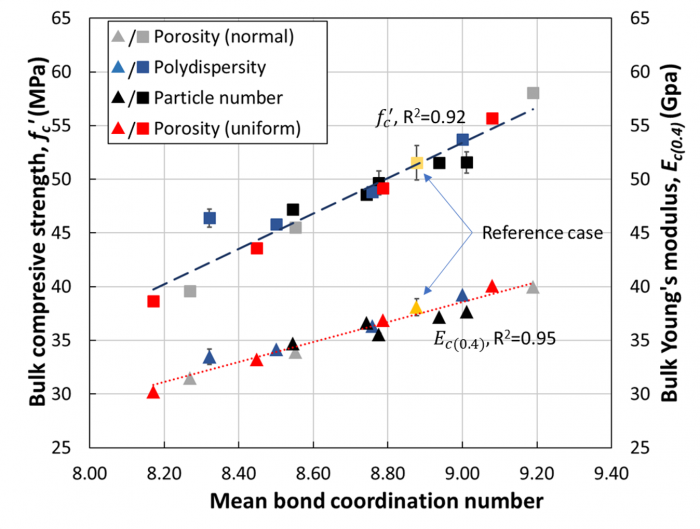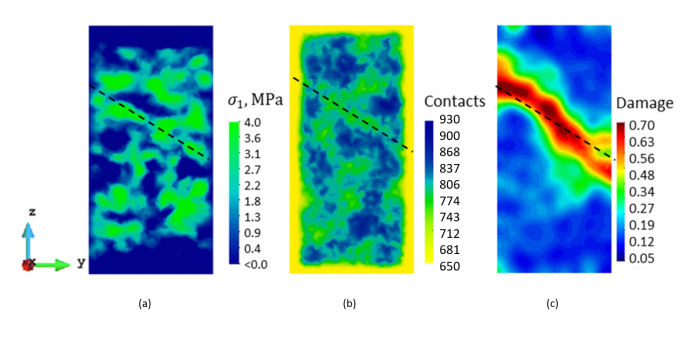- RESEARCHER
- Anthony Wang
- INSTITUTE
- University of Edinburgh
- DEPARTMENT
- Civil and Environmental Engineering
- SUPERVISOR
- Prof. J.Y. Ooi, Dr J.P. Morrissey, Dr H.K. Chai
- TIMELINE
- September 2017 to May 2018
Due to the inherently discontinuous nature of cementitious materials such as rock and concrete, there is an increasing use of the Discrete Element Method (DEM) to study their complex discrete and fracture behavior. In using this method, the computational cost of calibrating the many bonded DEM parameters and understanding the meaning of these parameters remains a challenge. This study tackles these issues by examining the significance of the bonded DEM parameters and their contribution to a concrete sample's response to loading (Fig. 1). The simulations, once validated against experimental observations, can provide important insights into the cracking and fracture mechanisms governing the failure of concrete under loading (Fig. 2). Using a previously verified Timoshenko beam bond model (Brown et al. 2014), which was implemented in EDEM through the API, a full parametric study was carried out to identify the key mesoscopic properties of concrete. Moreover, by combining EDEM's post-processor with Particle Analytics Iota Suite, spatio-temporal results of stress and fabric properties were computed and analyzed to shed light on the model parameters and their influence on the bulk response of concrete throughout the loading process. Results demonstrate that the average bond coordination number is fundamentally related to bulk strength and stiffness of the concrete as shown in Fig. 1. The calibration of the normal-to-shear ratios of bond stiffness and bond strength was found to be the most important to reproduce realistic elastic and fracture behavior respectively. Also, mesoscopic contact density and internal bond stress show good potential in their ability to predict the location and inclination of macroscopic failure (Fig. 2). These findings are important in informing how a cementitious material such as concrete can be modelled successfully.  Fig 1. Graph showing insights into cracking and fracture mechanisms of concrete under loading
Fig 1. Graph showing insights into cracking and fracture mechanisms of concrete under loading  Fig 2. Identification of key mesoscopic properties of concrete
Fig 2. Identification of key mesoscopic properties of concrete
Video
Video
Few software packages offer both a smooth initial learning curve as well as advanced, cutting-edge technological capabilities - but EDEM is definitely one of them. All in all, EDEM provided an excellent platform to kick-off my journey in research, allowing me to go from no prior DEM knowledge to collaborating on a paper with a world-leading research team in less than one year!